People whose sense of well-being shifted positively in the past two years are finding greater personal purpose and financial health, we see in Sharecare’s Community Well-Being Index – 2021 State Rankings Report.
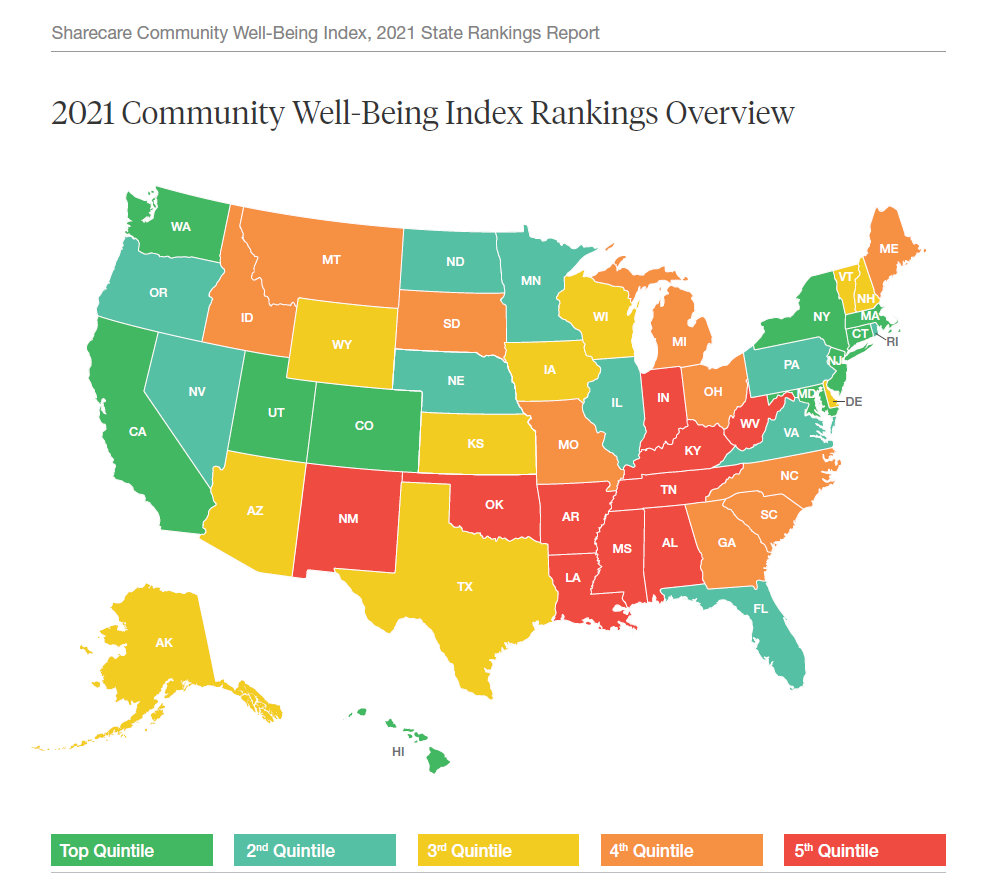
Sharecare has been annually tracking well-being across the 50 U.S. states since 2008. When the study launched, Well-Being Index evaluated five domains: physical, social, community, purpose, and financial.
In 2020, Sharecare began a collaboration with the Boston University School of Public Health to expand the Index, including drivers of health such as,
- Healthcare access (like physician supply per 1,000 residents)
- Food access (looking at grocery store concentrations vs. food deserts)
- Economic activity (e.g., rates of employment and labor force participation, income levels)
- Housing and transportation (e.g., home values, public transit use), and,
- Resource access (such as libraries and religious institutions, and employment rates for older people).
The addition of these determinants of health data has enriched the Well-Being Index and better inform our planning and strategies, whether for public policy or commercial health care products and services.
Based on the extensive data mash-up across the 10 domains and nearly 500,000 surveys conducted throughout the U.S., the map breaks out the findings by State in quintiles. The top ten states for Well-being were Massachusetts, Hawaii, New Jersey, Maryland, New York, California, Colorado, Connecticut, Washington, and Utah.
The bottom ten in 2021 were Indiana, Tennessee, Oklahoma, Louisiana, New Mexico, Alabama, Kentucky, West Virginia, Arkansas, and Mississippi.
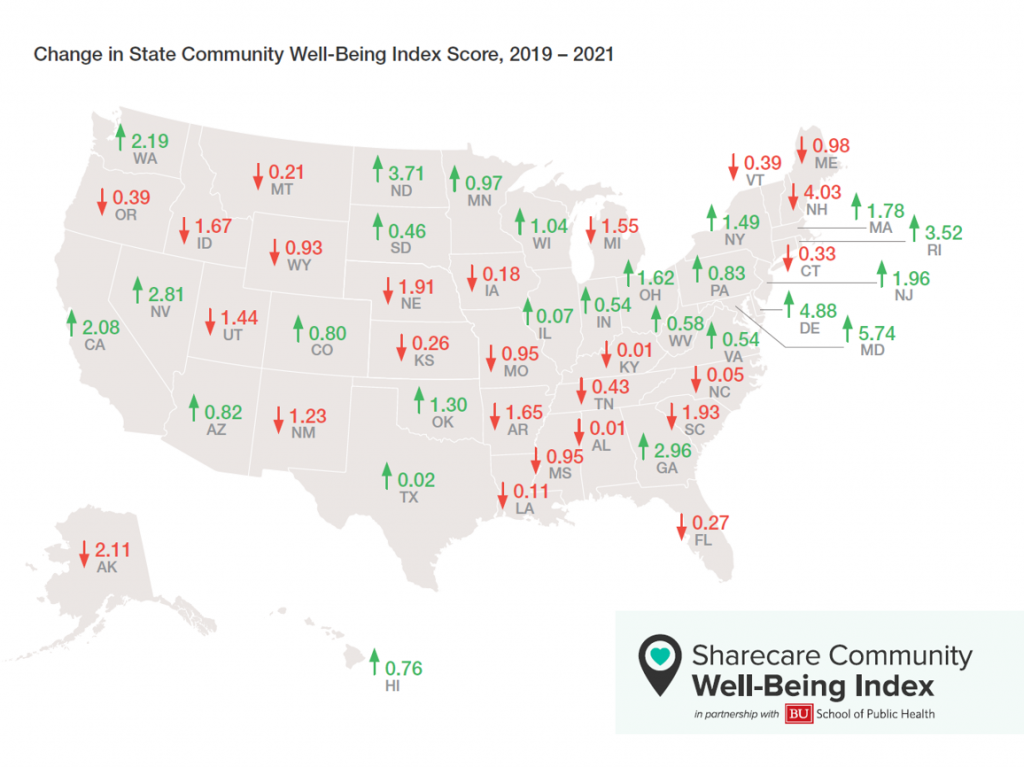
The second map illustrates the State-by-State trends, up and down, in each region’s Community Well-Being Index score. Noting the green advancements, the largest enhancements in Well-Being were found in Maryland (an increase of 5.74), Delaware (up 4.88), North Dakota (up 3.71), and Rhode Island (growing 3.52).
The biggest fall in the Community Well-Being score (in red) was seen in New Hampshire, dropping over 4 points.
Among the top 10 states for Community Well-Being, only Connecticut and Utah saw declines in their Index scores.
Among the bottom 10, several states scores improved including Indiana, Oklahoma, and West Virginia, and Alabama and Kentucky stayed relatively even.
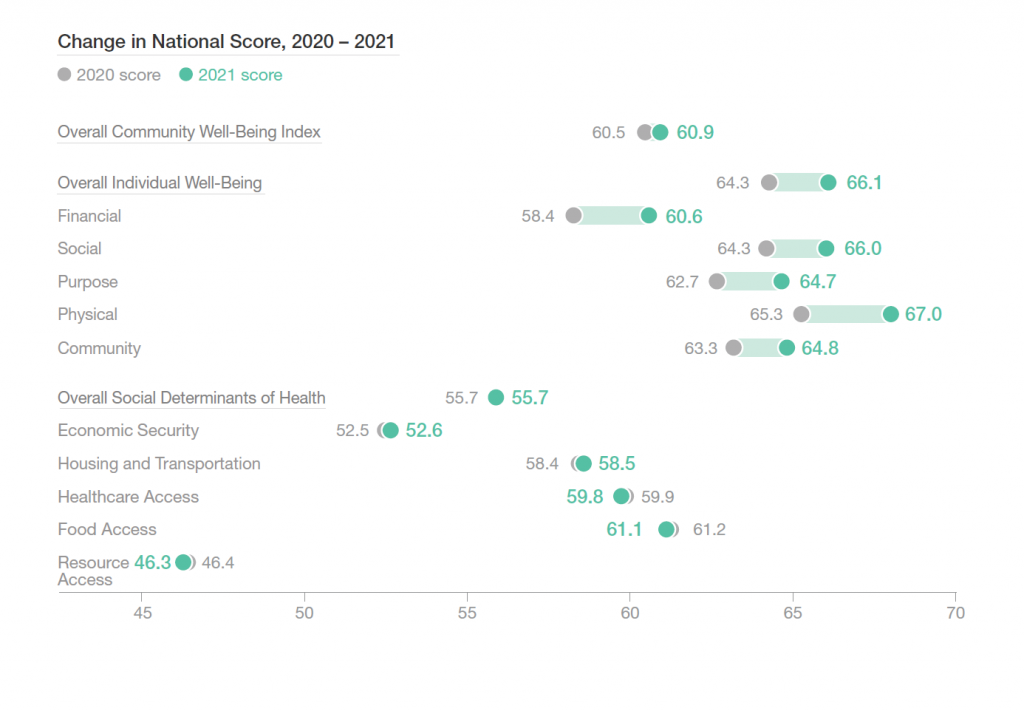
Check out the changes in the national score chart, assessing the Well-Being domains and the Determinants of Health.
We see that each of the five Individual Well-Being indicators improved on a national U.S. basis, moving from the 2020 grey dot to the green 2021 score.
But it’s a different story for the Social Determinants of Health factors. There was very little movement across these five pillars, each of which stayed pretty much in its place from 2020 to 2021.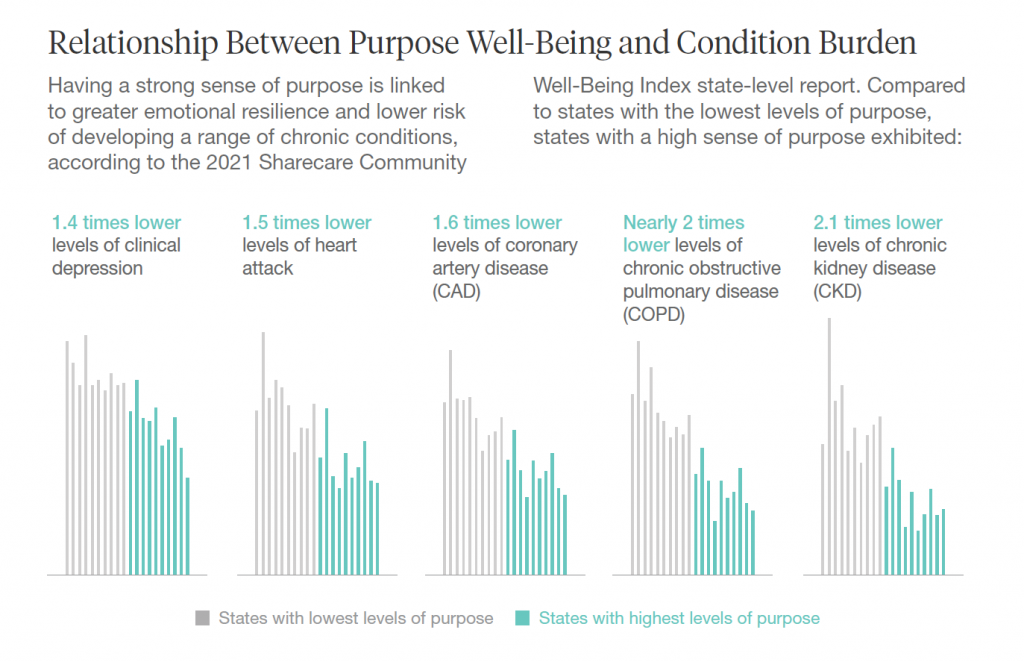
These drivers of health directly shape peoples’ health status. The third chart here graphs the relationship between purpose well-being and medical conditions, as the research calls out that emotional resilience can lower risk of developing certain conditions.
See that peoples’ greater sense of purpose was related to,
- 1.4 times lower levels of depression
- 1.5 times lower levels of heart attack
- 1.6 times lower levels of coronary artery disease
- Nearly two times lower levels of chronic obstructive pulmonary disease, and
- 2.1 times lower levels of chronic kidney disease.
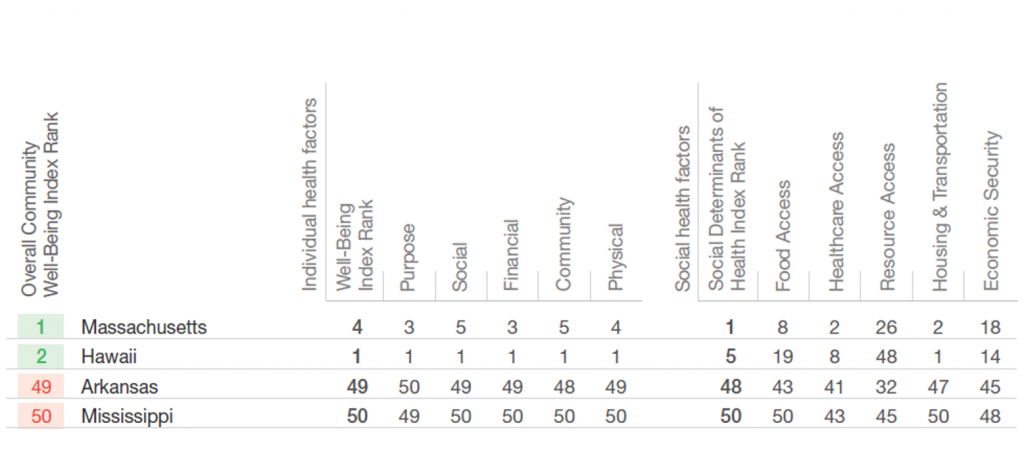
It’s instructive to get granular here and examine the top two compared with the bottom two states for Well-Being.
Hawaii, ranked second among the fifty states, ranks first for each individual health factor, and fifth for determinants of health — calling out challenges for resource access and food access.
Massachusetts, first among the states for determinants of health, was in the top five across all of the individual health factors.
Mississippi, ranking last among the 50 states, was last for all health factors except for purpose, ranking second to the bottom; and in the bottom ten across all of the determinants of health factors. Arkansas, in the bottom three for all of the individual health actors, ranked bottom ten in determinants of health except for resource access, at 32nd.
“Every bottom-ranked state for the Index landed a bottom 10 ranking for the community well-being domain,” the report explains, “reinforcing the importance of liking where you live, feeling safe and having pride in your community. Similarly, nine of the 10 bottom-ranked states ranked last for purpose, an essential domain for sustaining a productive and motivate workforce, as well as fostering healthy homes, classrooms, senior living centers, volunteers, and more,” Sharecare and team concludes.
Health Populi’s Hot Points: In 2021, the difference between the Top 10 and Bottom 10 in the Sharecare Well-Being Index was 17.7 points, versus 17.0 points in 2020 and 16.1 points in 2019.
The researchers point out that this seemingly subtle shift in Index scores “continue[s] to divide the top from the bottom, demonstrating increased inequities for states and communities across the country.”
Note that top-ranked states have nearly 1.6 lower rates of severe risks for financial stress.
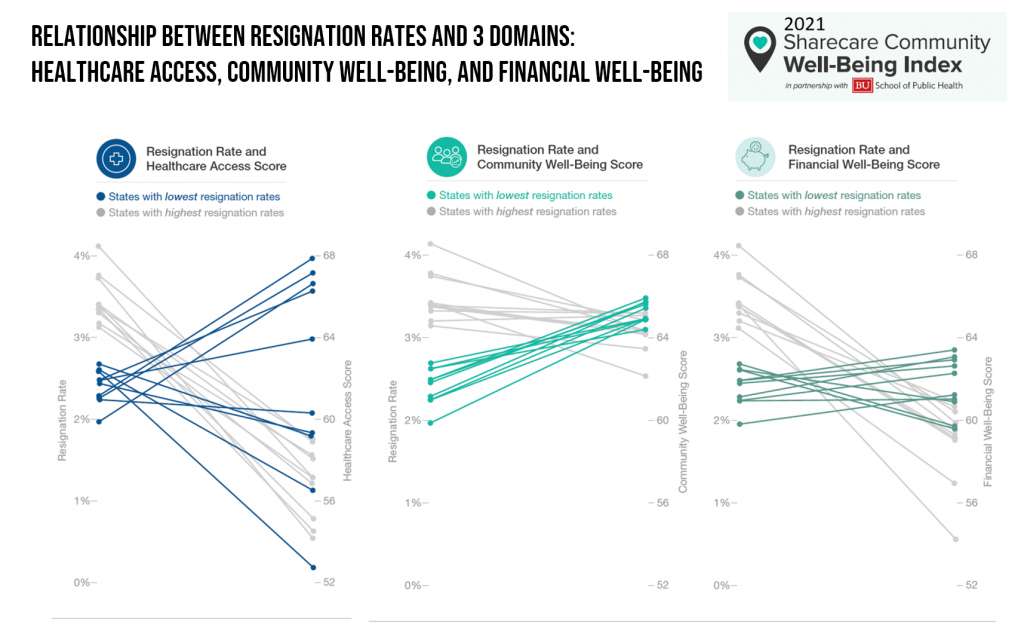
The advent of the Great Resignation – which we can recast as the Great Reconsideration or Great Re-evaluation — has a relationship to at least three pillars of Well-Being in this year’s Index study.
The last chart organizes three aspects of the resignation rate and its relation to healthcare access, community well-being, and financial well-being.
In each of these three domains, the research showed that compared with states with lower resignation rates, those states with highest resignation rates revealed,
- Less access to health care facilities and resources (such as fewer doctors per capita)
- Weaker ties to the community, and
- Lower financial well-being (e.g., 1.2 times more residents without enough money to do what they like to do daily, and 1.3 times more residents with risk of severe financial stress).
To mitigate the risks of communities Well-Being erosion, Sharecare has developed an approach to best practices which seek to align a community’s diverse stakeholders: employers, health plans, government agencies, life science companies, providers, community leaders, retailers, faith leaders, and others who have keen interests in bolstering peoples’ overall health.
This requires folks to come together where they live, work, play, pray, learn, and shop — an honorable undertaking that can seem pretty elusive. But in the interest of all of our health citizenship and civil society, Sharecare and Boston University urge us ever onward to keep working toward Well-Being, to dissolve the divisions that keep every U.S. health citizen from achieving their highest level of health across all dimensions.




 Thank you FeedSpot for
Thank you FeedSpot for